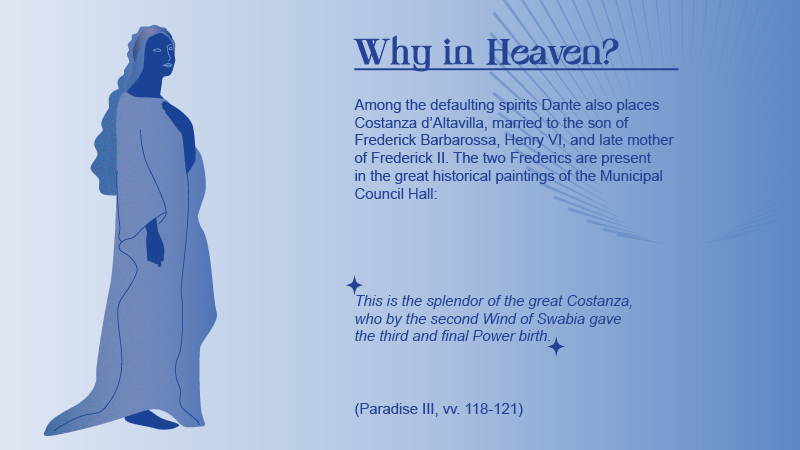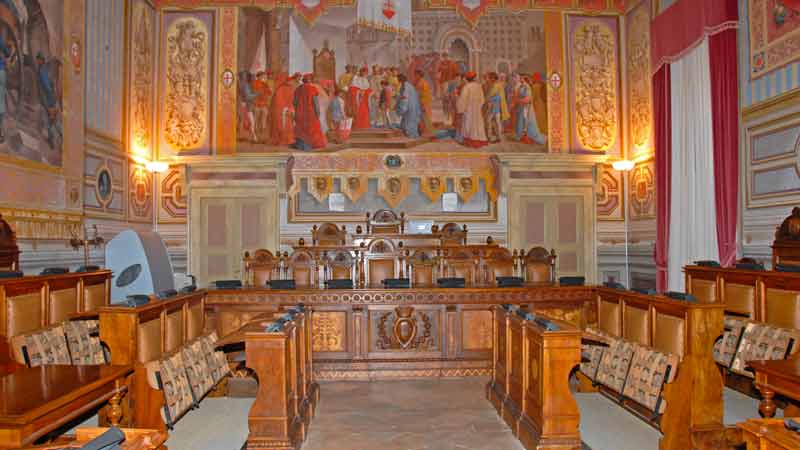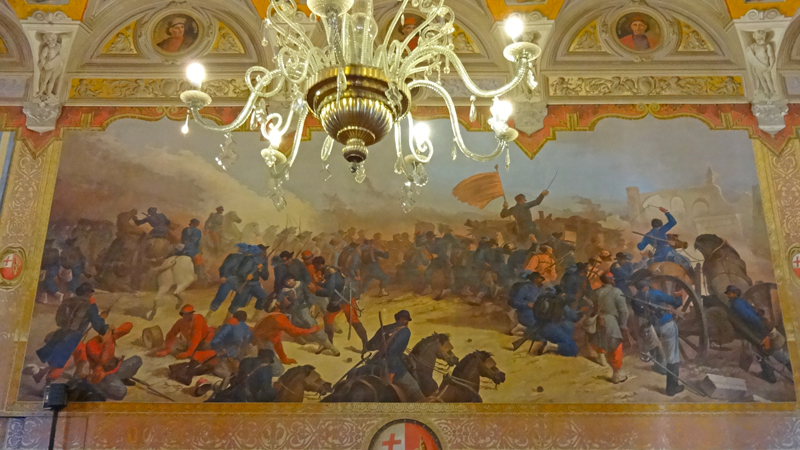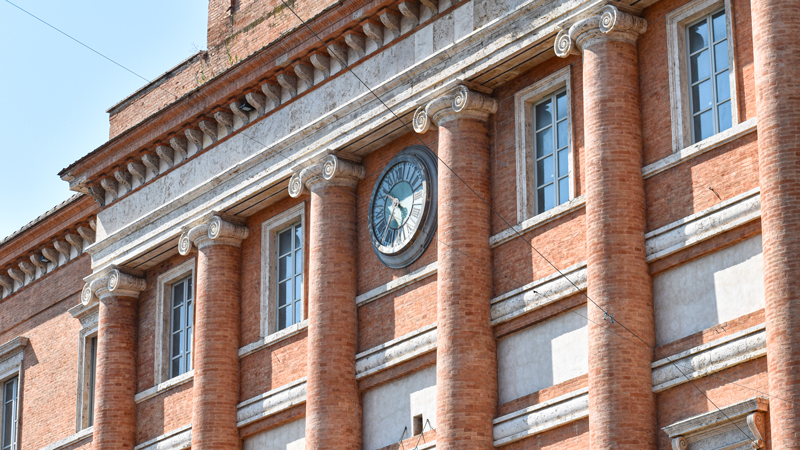The original core of the building dates back to the thirteenth century. However, the building was completely rebuilt between the middle of the sixteenth century and the middle of the following century, when the palaces of the Priori and Capitano del Popolo were merged. The Town Hall was damaged by the earthquake of 1832, and then restored in a neoclassical style by architect Antonio Mollari. The little tower, called “torrino”, was destroyed by the 1997 earthquake, but it has been recently fully restored. It is 52 metres high. Going up to the mezzanine, we can admire the sixteenth-century fresco of the Madonna del Velo. On the first floor, next to the access door to the current “Sala della Giunta”, within a fake architecture there are the images of St Feliciano, the blessed Pietro Crisci and above them the Holy Spirit represented by a dove. The hall of the Municipal Council was entirely decorated by Mariano Piervittori with the allegories of the Triumphant Wisdom, the Strength, the Prudence and the Justice, the allegories of arts, sciences and techniques and the portraits of sixteen illustrious people from Foligno. On the walls there are three great historical paintings: The arrival of Frederick II as a youth in Foligno, The Foligno Count Robbacastelli rejects the army of Frederick I Barbarossa and The death of Colomba Antonietti. The two longitudinal walls have four tondos that refer to Dante's journey into the afterlife, recalling the first edition of the Divine Comedy printed in Foligno on 11 April 1472. Other noteworthy features are the Hall of Landscapes, the Hall of arms, which has the walls decorated with the coats of arms of the noble families of Foligno, and the Hall of Arts and Crafts, which is currently the mayor’s hall.

Il progetto Divina Foligno è sviluppato nell’ambito del “programma Agenda urbana di Foligno Smart community - Comunità, Sostenibilità – Foligno 2020” intervento OT.6 INT_01 “Realizzazione della rete di attrattori culturali attraverso la realizzazione di itinerari culturali e tematici

The Divina Foligno project is promoted and financed as part of the "Urban Agenda of Foligno Smart community - Community, Sustainability - Foligno 2020 program" intervention OT.6 INT_01 "Creation of a network of cultural attractions through the creation of cultural and thematic itineraries"

Copyright © 2022 Landmark. All rights reserved.









